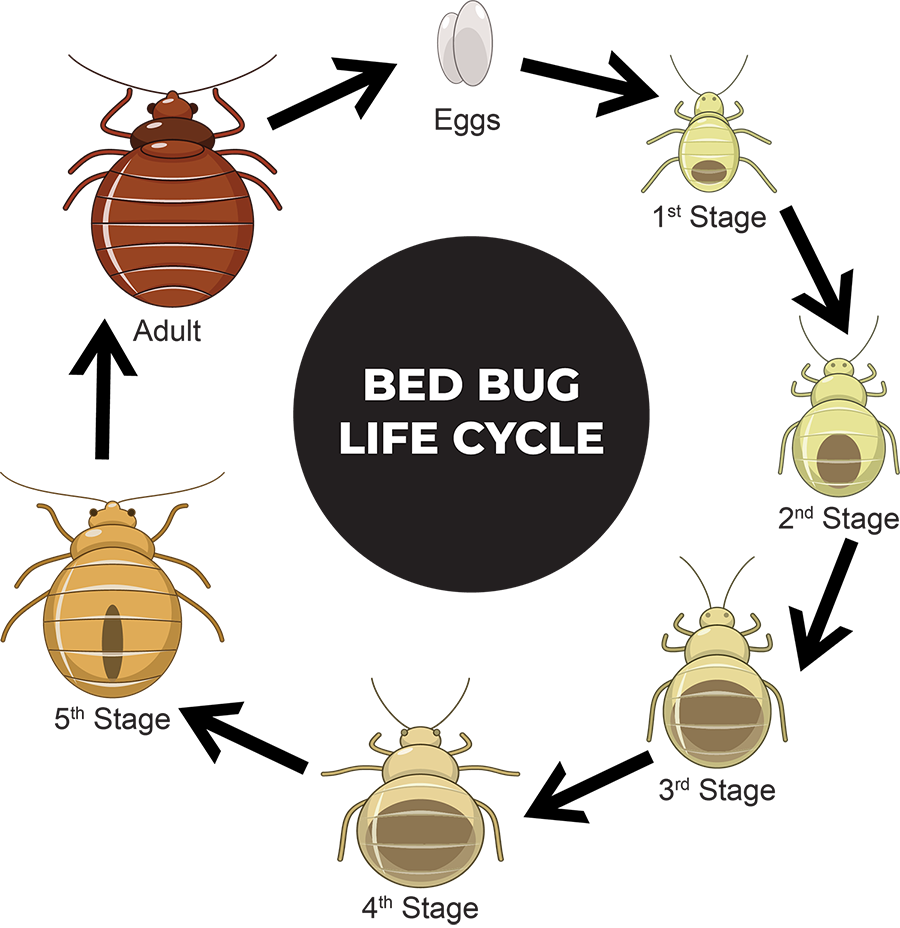After an outbreak in the 1950s Bed Bugs were virtually wiped out with the use of an insecticide called DDT, which was later banned for health reasons.
The Bed Bug egg develops into a nymph (baby Bed Bug) which needs to feed within 3 days in order to survive. The Bed Bug must take a feed in order to moult its skin and grow. The full process into an adult takes around 37 days with 5 moults. Adult Bed Bugs have a life span of nearly one year, depending on temperature and feeds.
Bed Bugs become active at night, between midnight and 5:00 am when we are typically in our deepest sleep.
They are attracted to CO2 produced when we breath and our body heat. Despite their name studies have shown that 69% of Bed Bugs are not on the bed but in the surrounding area of the headboard, furniture, skirting board, electrical fittings or behind wall paper. They can travel up to 4ft per minute which allows them to harbour several feet away from the bed.


When a Bed Bug finds a host, they probe the skin several times with their mouthparts to find a capillary space that allows the blood to flow rapidly into their bodies. The probing results in the host receiving several bites from the same Bug. It will feed for 5-10 minutes. The Bed Bug feeds every 3-7 days, which means that the majority of the population is in the digesting state, and not feeding most of the time.
A female Bed Bug will produce between 1- 7 eggs per day for about 10 days after a single blood meal. A single female can produce about 113 eggs in her whole life. Eggs can be laid singly or in groups therefore a wandering female can lay an egg anywhere in a room. Egg mortality is low and approximately 97% of the Bed Bug eggs hatch successfully.

